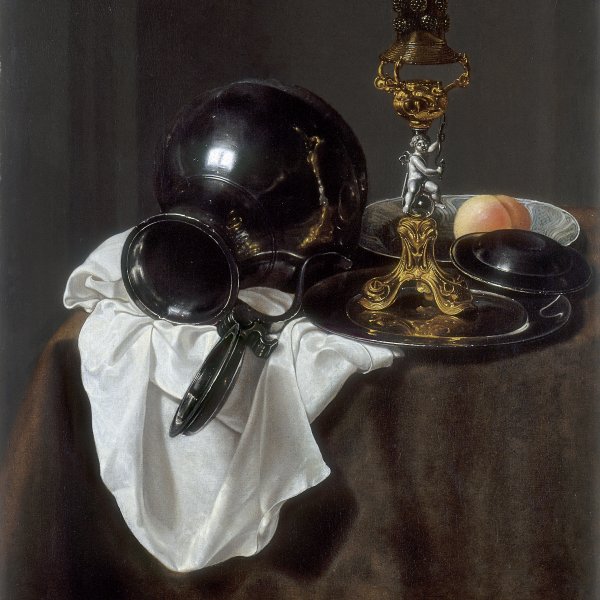Jan Jansz. Treck
Amsterdam, 1605/6 -1652
Treck was a Dutch still-life painter and brother-in-law of the still-life painter Jan Jansz. den Uyl, with whom he began his training. First documented as an independent painter in 1623, Treck lived and worked throughout his life in his native city. On the death of Den Uyl around 1639 he inherited his possessions and cared for his widow and sons, who became his pupils. Only a small part of Treck’s oeuvre has survived and only four dated works are known, from 1641, 1647, 1649 and 1650, making his chronology difficult to establish. Treck died in Amsterdam in 1652.
Treck’s work is so stylistically reliant on that of Den Uyl that it is difficult to distinguish the two hands. His earliest compositions of around 1641 are characterised by an emphasis on vertical lines, emphasised by his preference for vertical formats. He used large, empty backgrounds in pale tones with the motifs painted in large scale. From the outset his still lifes included glasses, glass vessels, porcelain and metallic objects and he used the reflections on the surface to add expressivity to these compositions. Another preferred motif was a white napkin or folded tablecloth that falls over the edge of the table. Treck’s later works reveal a greater stylistic independence although Den Uyl’s influence is still to be detected. Dating from 1647 during his last phase is a small Still Life (Rijksmuseum, Amsterdam) that manifests affinities with the work of Jan Jansz. van de Velde, while in general his work suggests a knowledge of the art of leading painters such as Pieter Claesz. and Willem Heda.
Treck’s work is so stylistically reliant on that of Den Uyl that it is difficult to distinguish the two hands. His earliest compositions of around 1641 are characterised by an emphasis on vertical lines, emphasised by his preference for vertical formats. He used large, empty backgrounds in pale tones with the motifs painted in large scale. From the outset his still lifes included glasses, glass vessels, porcelain and metallic objects and he used the reflections on the surface to add expressivity to these compositions. Another preferred motif was a white napkin or folded tablecloth that falls over the edge of the table. Treck’s later works reveal a greater stylistic independence although Den Uyl’s influence is still to be detected. Dating from 1647 during his last phase is a small Still Life (Rijksmuseum, Amsterdam) that manifests affinities with the work of Jan Jansz. van de Velde, while in general his work suggests a knowledge of the art of leading painters such as Pieter Claesz. and Willem Heda.





